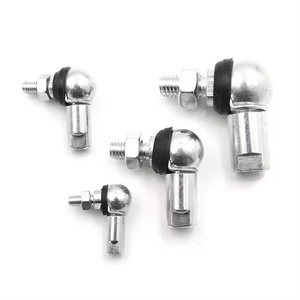The double ball joint suspension is actually an improvement based on the MacPherson suspension. It replaced the L-shaped control arm of the MacPherson suspension with two connecting rods, creating two connection points between the suspension and the sheep horn, hence the name double ball joint suspension.
The advantage of this structure is that it can improve the handling of the car and enhance the precision of steering. For example, many sports cars under BMW use double ball joint independent suspension, whose double ball joint design allows the connecting rod to handle lateral and longitudinal movements separately, making the tires more flexible and providing more contact with the ground in extreme situations, thereby achieving dynamic stability of the body under intense driving.
Ball joints produced using CNC turning is a possible manufacturing method. CNC turning is a form of CNC (Computer Numerical Control) machining, mainly used for machining cylindrical workpieces. It removes materials by rotating cutting tools to create the desired shape and size.
The following are the general steps for producing Ball Joints using CNC turning:
Design and Programming: Firstly, designers will use CAD (Computer Aided Design) software to create a 3D model ofball joints. Then, this model will be converted into code that CAM (Computer Aided Manufacturing) software can understand, usually G code or M code, which contains all the instructions and parameters that the machine tool needs to execute during the machining process.
Material preparation: Select suitable materials based on the design. For ball joints, factors such as wear resistance, strength, and toughness may need to be considered.
Machine tool setting: Install and fix the workpiece on the CNC lathe. Meanwhile, select the appropriate cutting tool and install it on the machine tool.
Processing operation: Input the programmed G code into the control system of the machine tool, and start the machine tool for processing. The machine tool will automatically rotate the cutting tool according to the instructions in G code to remove excess material from the workpiece, thereby creating the shape of Ball Joints.
Processing inspection: After the processing is completed, perform quality inspection on ball joints. This may include size measurement, surface smoothness inspection, material hardness testing, etc. If non-conforming products are found, they may need to be repaired or reprocessed.
Subsequent processing: If necessary, perform subsequent processing on ball joints, such as heat treatment, surface treatment, assembly, etc.
The advantages of CNC turning to produce ball joints include high precision, high efficiency, and high degree of automation. However, since CNC turning is mainly suitable for machining cylindrical workpieces, if the shape of ball joints is complex, it may be necessary to combine other CNC machining methods, such as CNC milling.
